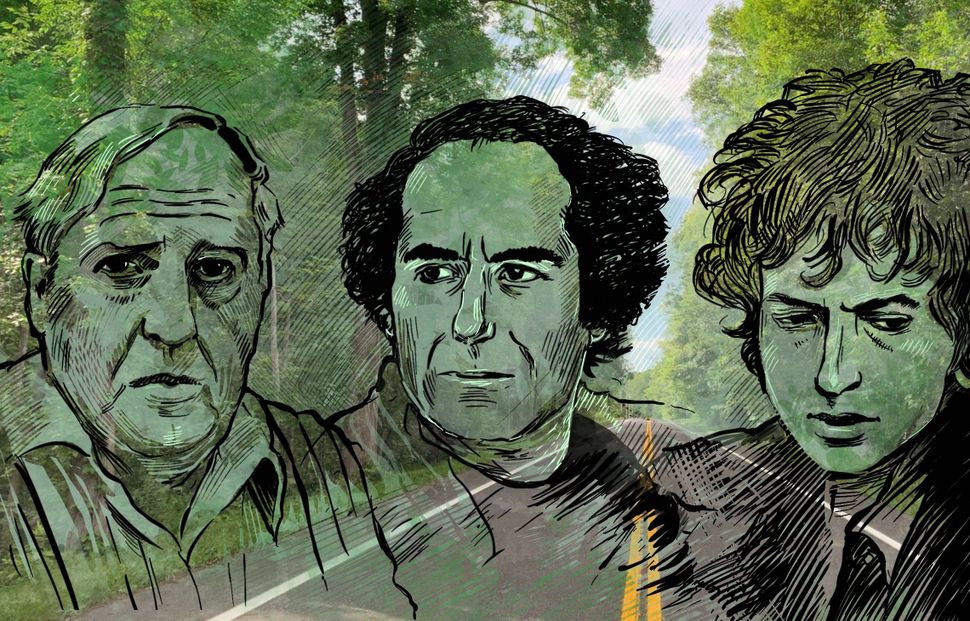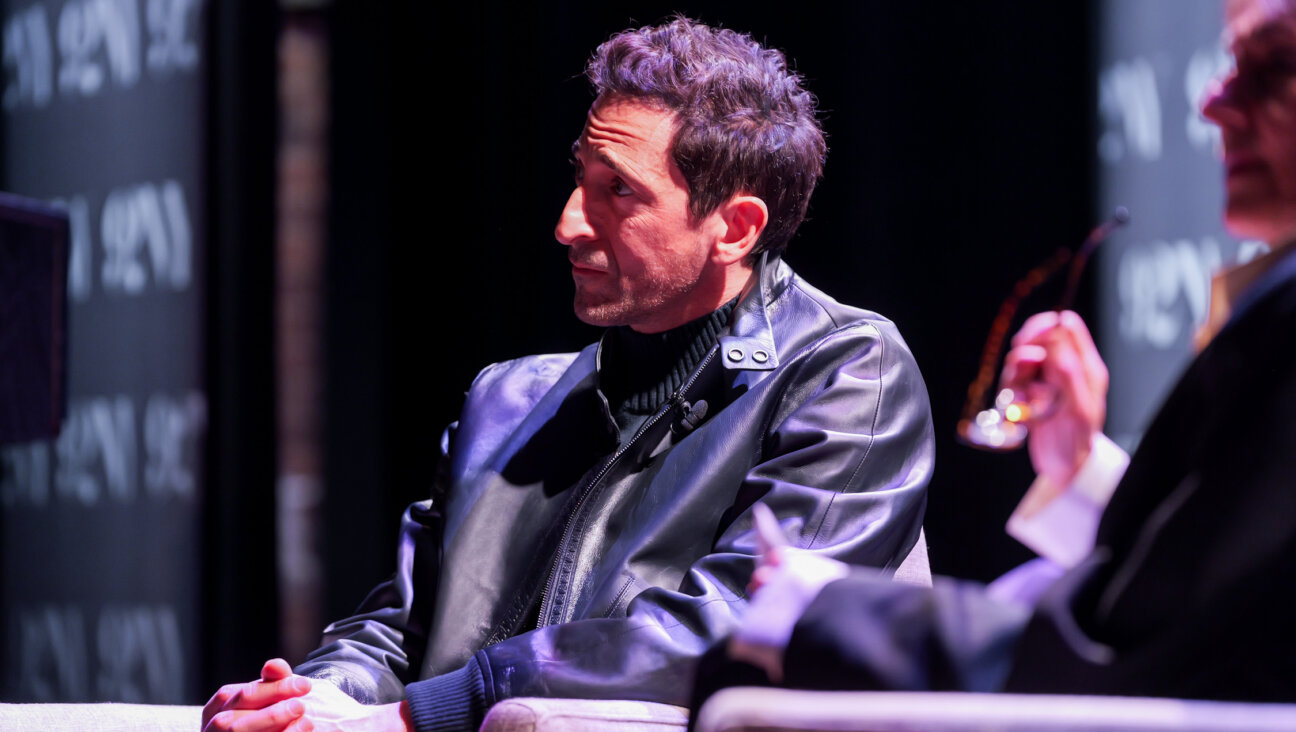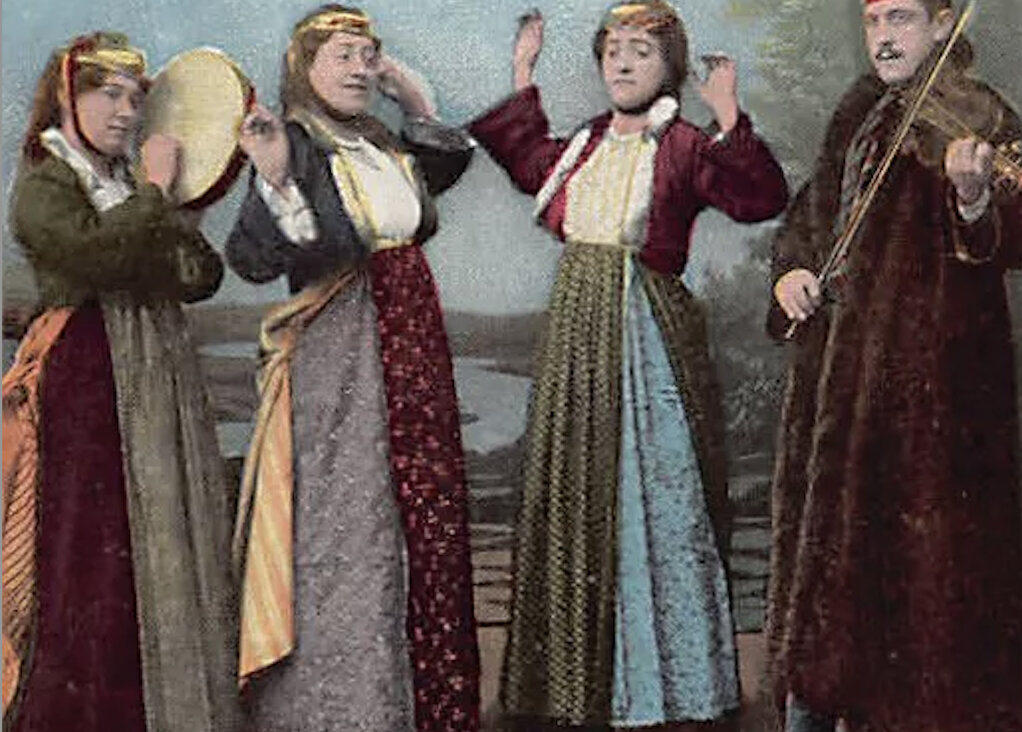How Woodstock revolutionized art — a story that has nothing to do with a music festival

Philip Guston, Philip Roth and Bob Dylan Image by Anya Ulinich
At the end of the 60s, for reasons that had nothing to do with Jimi Hendrix, the town of Woodstock, N.Y. changed the course of American culture. By the first day of the Woodstock Music & Art Festival — which didn’t even take place in the town it’s named for, and was more retrospect than game-changer, anyway — Woodstock’s major contributions to arts and letters were, truth be told, mostly in the rear-view mirror.
50 years ago, if you were a famous, East Coast-based artist of some sort, there was a well-thumbed playbook for you to consult. You came out with a new book, or album, or solo show. People loved or hated you for it, but in either case refused to leave you alone. You got sick of the attention. You realized you weren’t getting anything done. You became disillusioned. You decided to move upstate, where there were artists and intellectuals aplenty but no awkward run-ins, coke parties, or hordes of critics and sycophants. You spent a couple quiet years there, trying to unlearn the lessons of celebrity. You returned to the big city, bursting with new ideas that were utterly, deliberately unlike the ones that made you famous. And then, of course, your ideas flopped.
That is how, in the spring of 1969, America’s greatest living novelist, America’s greatest living painter, and America’s greatest living musician — or, to put it more concisely, Philip Roth, Philip Guston, and Bob Dylan — all happened to be living in a town with a population in the low four figures.
MEN OF MOSTLY BOUNDLESS APPETITES

Three for the Road: In 1969, Philip Guston, Philip Roth and Bob Dylan tired of city life and tried to revitalize their art in Woodstock, N.Y. Image by Anya ulinich
The pioneer of the trio was Guston, who’d had a house in Woodstock since the late 40s, and who’s been teetering on the verge of household name status since his death in 1980. Born to Jewish immigrants in Montreal in 1913, Guston has a fair claim to being the most influential American artist of the last few decades — it’s hard to imagine Dana Schutz’s portrait of Emmett Till, to name one much argued-over example, without him. By all rights, 2020 should have been the year he crossed over: he was the protagonist of two major shows, since delayed, and a scene-stealing bit player in the Whitney Museum’s “Vida Americana,” maybe the most significant recent New York exhibition. Instead, he remains a painter’s painter, beatified and borrowed from but lacking the absolute visibility of Pollock or Warhol — which is just the way he’d like it.
Guston had a boundless appetite for the new, and an autodidact’s impatience with isms. By 1967, he had made his reputation as a WPA muralist after the fashion of Rivera or Siqueiros, switched to easel painting, forged another career as a first-generation New York School painter, and then given up on that, too. His work from the 50s and early 60s was abstract and expressive, but he disliked the term “Abstract Expressionism,” with its ponderous Latinate syllables, its academic primness.

Philip Guston: By 1967, the artist had made his reputation as a WPA muralist after the fashion of Rivera or Siqueiros, switched to easel painting, forged another career as a first-generation New York School painter, and then gave up on that, too. Image by Anya Ulinich
Guston, to quote another disillusioned Jew named Philip, “felt he’d exhausted the means that had unlocked him as an abstract painter, and he was bored and disgusted by the skills that had gained him renown. He didn’t want to paint like that ever again; he tried to convince himself he shouldn’t paint at all. But since nothing but painting could contain his emotional turbulence, let alone begin to deplete his self-mythologizing monomania, renouncing painting would have been tantamount to committing suicide.”
Note the combination of affection and disdain in these sentences, the way disgust gets piled on top of boredom (you’d think they wouldn’t go together), the way “monomania” is tossed off mid-sentence — could this be the prose of anyone but Philip Roth?
In the spring of 1969, Roth’s third novel, “Portnoy’s Complaint,” was still high on the bestseller list, and the joke about wanting to meet the author but not wanting to shake his hand was already a cliché. Roth was 36, rich (for “Portnoy,” the advance alone was a quarter-million), heavy with prizes (a National Book Award for “Goodbye, Columbus”), and unsure of what came next. The only thing he knew he shouldn’t do — and, for the rest of his career, never really did — was try to out-Portnoy “Portnoy.”
Woodstock beckoned. Roth followed. When he wasn’t working on new fiction (or his girlfriend at the time, “a young woman who was finishing a Ph.D.,” he was shooting the breeze with his new best friend, Philip Guston. Guston was a generation older, but the two men shared a fondness for Samuel Beckett and roadside diners, a pious disdain for the Judaism of their youths, and a weariness, implicit in their being in Woodstock at all, of all things Manhattan.
As Roth was settling into his new home, Bob Dylan was preparing to leave his. In 1969, Dylan was in the midst of his most avant-garde performance so far: a deafening, years-long silence that his fans analyzed with the same obsessiveness they’d applied to the lyrics of “Like A Rolling Stone.” The silence had begun in 1966 with, depending on who you asked and when you asked them, a motorcycle accident or a nervous breakdown.
Dylan used the crash as an excuse to move to Woodstock with his wife and kids, and spent much of the next few years in an 11-room house overlooking the town. He wasn’t a recluse by any means — by any sane standard, his Woodstock time was star-studded and action-packed. There were new recordings, most notably “The Basement Tapes.” There were performances (Woody Guthrie’s memorial concert in 1968) and celebrity guests (Allen Ginsberg). There was a photo feature in the Saturday Evening Post. But there was no Summer of Love for Dylan, no Monterey Pop, no Vietnam demonstrations.
And no Woodstock music festival.
Dylan had turned down an offer to perform there, supposedly because his son was sick, though this didn’t keep him away from accepting top billing at the Isle of Wight around the same time. The truth is clear enough: after years of providing artists and writers with something close to isolation, Woodstock was losing its charm. The secret was out. By the fall, Dylan was living in Greenwich Village. When asked why he’d returned to Manhattan, he said Woodstock had too many druggies.
Too many druggies! If you didn’t know better, you’d think this a hopelessly square thing to say. But then, Dylan was never the counterculture warrior his fans wanted him to be — more Beat than Hippie, more stoner than acidhead, more Kerouac (a lifelong Republican, incidentally) than Kesey. Like Roth, like Guston, he got mistaken for a New Leftie because he broke so many of the rules. Most rule-breaker artists die well before society catches up with them; a few live long enough to see a few of their tricks catch on. By the end of the 60s, Roth, Guston, and Dylan were in the awkward position of being both avant-garde and utterly uncontroversial, with many years left to go. Fleeing to Woodstock — and, soon enough, right back to New York City — was a way for them to rethink their relationship with the public that had slapped them with early success.
ESCAPE BACK TO NEW YORK
It’s easy to be nostalgic for a time when people fled New York City for reasons other than a deadly virus — and even easier, perhaps, to be nostalgic for a time when one of the biggest celebrities in America could go off-grid and count on a few years of peace and quiet. It’s easy, but in some sense it misses the point. Dylan, Guston, and Roth backed away but never really took a break. They kvetched about the New York cultural establishment, but they brought it with them wherever they went. I’m reminded of the critic René Girard’s observation that those who choose to live in isolation nurse a sickly obsession with the herd.
To be an artist is, in some overt or not-so-overt way, to hate the herd, and to hate the herd is to love it, and be loved and hated in return. The 70s got off to a bumpy start for Roth, Guston, and Dylan — how could it be otherwise? After declaring themselves tired of New York City, the three of them had come back, and critics could barely resist the opportunity to remind them that they weren’t above the law.
The closest thing to an exception was Roth. “Our Gang,” his first post-“Portnoy” novel, was a broad political satire of Nixon’s America, from Vietnam to the Boy Scouts. Released toward the end of 1971, it stayed on the bestseller list for 18 weeks and got a good review in The Times, courtesy of Dwight MacDonald, though even MacDonald’s compliments sounded curiously backhanded — e.g., “I laughed out loud 16 times and giggled internally a statistically unverifiable amount. In short, a masterpiece.” More typical was The New Republic’s pan: “tasteless and dreadful,” “gross and difficult-to-excuse,” and so on. Perhaps the most notable reviewer of “Our Gang” was Richard Nixon, who wasn’t amused with Roth’s decision to structure a novel around a character named President Trick E. Dixon.

Philip Roth: “Our Gang,” was the author’s first post-“Portnoy” novel, a broad political satire of Nixon’s America, from Vietnam to the Boy Scouts. Image by Anya Ulinich
I’m afraid I have to side with Nixon on this one. Roth has made me guffaw more than any novelist I can think of (though, unlike the meticulous MacDonald, I haven’t tallied every snort and chuckle) — but has anyone ever written more ham-fisted “satire?” “Our Gang” appears to have been whipped up for an audience that finds knee-slapping hilarity in names like “John F. Charisma” and “Mr. Asslick.” A year shy of the election, Roth took on Nixon with all the cringey self-importance of “SNL” taking on Donald J. Trump (speaking of whom, what could be more Trumpian than calling LBJ Lyin’ B. Johnson?).
“Almost neurotically unfunny,” Martin Amis said of “Our Gang,” though it seems fairer to say that Roth was taking a break from his neuroses, before diving back in for the next 40 years. Guston had encouraged him to direct his outrage outward, at the GOP, and it would be more than a quarter-century before he’d do so again, in “The Plot Against America.” Guston himself took Nixon as an artistic subject many times in the early 70s; in August 1971, he drew a series of ink-on-paper sketches with the cheap, inevitable title “Poor Richard.” If pressed to explain why I think these broad, clumsy drawings are masterpieces while “Our Gang” is just broad and clumsy, I’d point to a certain sinister vagueness that’s missing from the latter.
Crude as they are, Guston’s drawings are never obvious. Often it takes you a minute to understand what you’re looking at, and even then, you keep looking in the hopes that it turns out to be something else. The drawings abound with squat, hairy little cones which may or may not be Klansmen — a disturbing presence in any drawing, let alone drawings featuring likenesses of jowly, big-nosed Nixon that veer queasily close to anti-Semitic caricature.
Deft satires these were not — but by the early 70s, Guston had more or less given up on deftness in art. His new work was blunt, earthy, cartoonish — and, perhaps worst of all, figurative. As such, the New York art critics ate it alive. In October 25, 1970, the Times published a thousand-word sneer by Hilton Kramer.
Guston’s new show at Marlborough Gallery, he wrote, was more than just an embarrassment; it was a sign of all that had been fraudulent about Guston’s work since the beginning. Guston was a “mandarin pretending to be a stumblebum.” He painted without any real feeling. His only talent was for spotting trends — in this case the return to figurative art, albeit of a primitive kind, led by Dubuffet and Red Grooms.
To pretend, as Kramer did, that figurative art was some kind of tiresome, played-out fad, when in truth it was just getting warmed up after a full generation in hibernation, took some world-class myopia. Still, it wasn’t the most myopic review Guston got that fall — that honor belonged to Robert Hughes who, two seconds after arriving in the States, felt qualified to declare paintings of Klansmen historically obsolete.
These critics failed to grasp the depth of feeling — decades’ worth — that underlay Guston’s new style. At the age of ten, Guston had found his father hanging in his shed; on the rare occasions when he spoke about the event, he suggested that local Klansmen had bullied his father into suicide. The Marlborough Show represented a return as much as a fresh start — the Klansmen evoke adolescent trauma, the weighty bodies and warm lagoons of color, not to mention the heart-on-sleeve leftism, echoed the early WPA murals.
Guston’s disillusionment with the purity of Abstract Expressionism led him outward, into the political sphere, and inward, to his own nightmares. The tragedy, and the miracle, was that these two places turned out to look very much alike.
The cover of “Self Portrait” — Bob Dylan’s first album of the 70s and, by general consensus, his worst — looks like a 70s Guston painting without the irony, and perhaps there’s something more to this comparison. After a few worried years in Woodstock, Guston returned to the gallery scene with a series of bulky, deliberately crude, repetitive images that were, for all that, deeply personal, and which critics insisted upon interpreting as an obsolete attempt at hip irony.

Bob Dylan: The cover of “Self Portrait,” his first album of the 70s and, by general consensus, his worst, looks like a 70s Guston painting without the irony, Image by Anya Ulinich
Dylan’s album, his first double since “Blonde on Blonde,” was equally overstuffed, so repetitive it had to be at least a little tongue-in-cheek, and sung in a vocal style he’d helped make obsolete. The first track, “All the Tired Horses,” doesn’t feature Dylan’s voice at all, just a female chorus singing, “All the tired horses in the sun / How’m I supposed to get any riding done? Hmm,” again and again and again.
You have to admire a world-famous musician who retreats from the public eye, releases a highly-anticipated album called “Self Portrait,” and remains unheard for the first three minutes and twenty-four seconds — and then sings a cover of someone else’s song. A good chunk of this album consists of covers (“The Boxer,” “Let It Be Me,” and a lovable gaggle of folk standards) and even some of the Dylan originals come from earlier albums. If this is a Duchampian practical joke, and plenty of people have suggested as much, it stops being funny by the middle of side one.
Maybe I’m being unfair. Dylan’s voice is low, rich, lubricated like a new machine, building on the croon he’d developed for “Nashville Skyline” the previous year. He knows what exactly he’s trying to do, and he does it. “Self Portrait” is the kind of album that seemed to exist, from the very beginning, in order to have its reputation restored someday. Dylan himself — if his interviews from the mid-70s, can be trusted — made statements to the effect that he was trying to make a bad album and shake off, once and for all, people’s expectations that he be the voice of a generation — but of course this sort of claim only encourages the rehabilitators’ fervor (“But that’s what makes it so brilliant!”). Speaking only for myself, I’m happy I never have to listen to “Self Portrait” again.
WHAT THEY LEARNED FROM WOODSTOCK
When I look at Dylan, Roth, and Guston’s creative output in the immediate aftermath of their Woodstock years, I find art that’s defined, and at times overshadowed, by what it’s not: an album, born from the desire to confound expectations and overstuffed with other people’s songs; unfunny fiction written by a comic genius hellbent on not rewriting his bestselling book. This is the way it should be. Great art is, if you can follow what I’m saying, very, very hard to make. Past excellence is no guarantee of future success, and any swerve as sharp as the one Roth was making was bound to be a bit uncomfortable. In hindsight, Guston seems like the exception, though few recognized his new paintings’ greatness at the time, and it’s hard to know how many false starts there were between 1967 and 1970.
Of course, the real measure of Dylan, Roth, and Guston’s time in Woodstock isn’t the work they did immediately afterward — it’s the work they did for the rest of their lives. Guston painted right up to the end; he lived just long enough to have the pleasure of hearing Robert Hughes recant, and nowadays he seems like a plausible candidate for the most inspired American painter since 1945. Dylan finally got the Nobel his disciples had been lobbying for him to receive since the 60s; Roth never won one, but it didn’t matter, seeing as he’d already won everything else.
In some quiet way, I think, this wouldn’t have been possible without the Woodstock years. History is full of promising talents who find their wheelhouses early on, get the recognition they’ve dreamed of, and then, because they’re terrified of upsetting the fans and critics who’ve been so kind to them, gradually shrink into laureled, jovial irrelevance.
Woodstock taught Guston, and Roth, and Dylan, that it didn’t have to be this way. They didn’t give up on their audiences altogether — I doubt any artists ever really do, whether or not they care to admit it — but they seemed to decide they could get by just fine without the attention. They could do whatever they wanted. All of which suggests that we’re remembering Woodstock the wrong way. It was never really an incubator of bold, new talents, or a countercultural Mecca. It was the detox clinic where talent, addicted to prestige, went to dry out, clear its head and get back to work.
Jackson Arn, a Forward contributing art critic, recently took second place for Excellence in Features from the Society for Features Journalism.
















